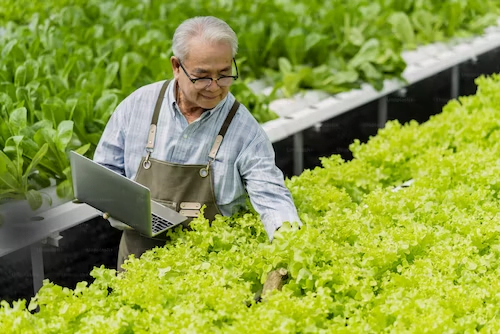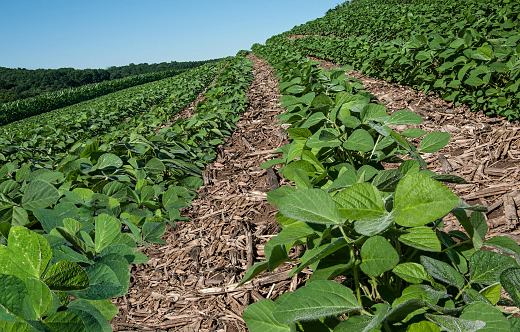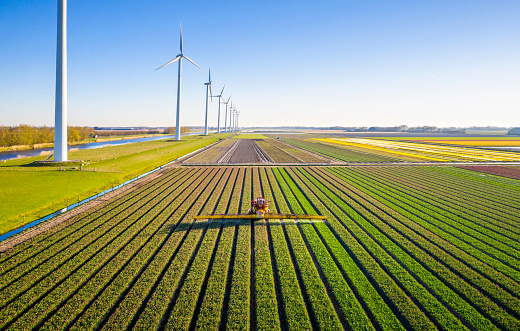
Among all occupations, agriculture is one of the most ancient. Humanity has been rearing cattle and growing crops for themselves and their communities for countless years. But former agricultural methods were frequently inefficient, resulting in issues like contamination of waterways, soil erosion, and other aspects of the environment.
Hence a growing number of people are realizing nowadays how important it is to implement sustainable farming methods. These methods will lessen the negative effects of agriculture on the surroundings while improving the effectiveness and production of the farm.
Using technologies that assist sustainable farming methods is crucial to sustainable agricultural systems.
Therefore, this article lists a few technologies that can create sustainable agricultural systems.
1. Precision Agriculture
Sustainable farming requires one to gather information about the soil, crop development, and production capacity, and that’s where precision agriculture comes in. It uses technologies like sensors, GPS, and mapping tools.
The data collected is worth utilizing to make wise decisions regarding using inputs such as water, fertilizer, and other materials that can save waste and boost crop yields.
Notably, growers of soybeans in the United States have long embraced agricultural advances that produce more enduring and valuable crops and rejuvenate the soil where those crops are cultivated.

Understand that there is no restriction on how to use precision agriculture. For instance, farmers can employ soil sensors to gauge the moisture content of the soil and modify irrigation as necessary.
Similarly, they can use devices for yield mapping to pinpoint more or less fruitful areas and change inputs as needed. To solve problems like erosion and nutrient loss, employ precision agriculture to identify fields’ vulnerable spots.
2. Crop Rotation
One should not ignore crop rotation as a tactic. It encompasses planting different crops in the same field at different seasons.
The results are controlled pests and pathogens, minimized erosion, and improved soil health. Since each crop has different nutrient needs; therefore, crop rotation can help boost soil fertility. It can also aid in reducing soil compaction and enhancing soil structure.
Based on the crops being cultivated, the climate of the region, and the state of the soil, a variety of unique crop rotation systems may be used.
You might notice corn, soybeans, and wheat being planted in that order in a three-year rotation. Or, corn, soybeans, wheat, and a cover crop might all be planted as part of a four-year cycle.
Nonetheless, countless aspects, like the crops cultivated, the soil type, and the location’s climate, influence the exact rotation system employed.

3. Integrated Pest Management (IPM)
If you have never heard of this approach, it focuses on controlling pests while minimizing pesticide use by combining biological, cultural, and chemical control tactics. As a result, the damaging effects of pesticides on the environment and public health are reduced significantly.
You will monitor pest numbers and act only when they reach a certain threshold. It can entail adopting cultural or biological control strategies, such as rotating crops or planting pest-resistant types, or biological control strategies, such as releasing natural insect predators.
IPM stresses the application of pesticides that are powerful against the target pest but have little influence on non-target organisms and the environment if chemical control approaches are required. Such could include choosing pesticides with a short environmental lifespan.
4. Renewable Energy
Sometimes, producing electricity on farms can be achieved by using renewable energy technologies like solar panels and wind turbines. These tactics minimize the need for fossil fuels and emissions of greenhouse gases.
Besides, they can lower the farming operation’s carbon impact and give farm buildings and machinery a dependable source of electricity.

Moreover, understand that the location plays a big role in which method can work successfully.
Some renewable energy methods can be employed on farms.
For example, solar energy can produce electricity or heat water when installed on rooftops or the ground. Likewise, wind turbines can be built and utilized to produce power in locations with predictable wind patterns.
Lastly, you can consider biomass energy systems, agricultural waste materials like crop residues, and animal manure, then convert them into heat and electricity.
5. Water-Saving Technologies
Drip irrigation and soil moisture sensors are among the common examples of water-saving technology that can minimize the amount of water utilized in agriculture.
Such a method can help you preserve water resources and lower the environmental effect of farming. When you employ drip irrigation, water is delivered directly to plant roots, preventing water loss from evaporation and runoff.
On top of that, water wastage can be decreased by using soil moisture sensors to assess soil moisture levels and adjust irrigation as necessary.
As highlighted before, the location determines the precise water-saving device you can use on the farm. For instance, harvesting rainwater is suitable in areas with predictable rainy seasons. When drought emerges, the harvested water can be used on the farms that need it most – through irrigation.
Final Thoughts
Adopting technologies to guarantee sustainable farming systems must be considered. It is one of the best approaches to establishing an environmentally welcoming future for agriculture.
So, suppose you are a farmer or are interested in such initiatives; in that case, you can pick one or a combination of strategies discussed in this post to help minimize wastage, increase production, and preserve resources like water and energy.
The ultimate result of applying these technologies is enhanced profitability for farmers, which is also suitable for local and global economies.







[…] 5 Sustainable Agriculture Methods and Farming Practices […]